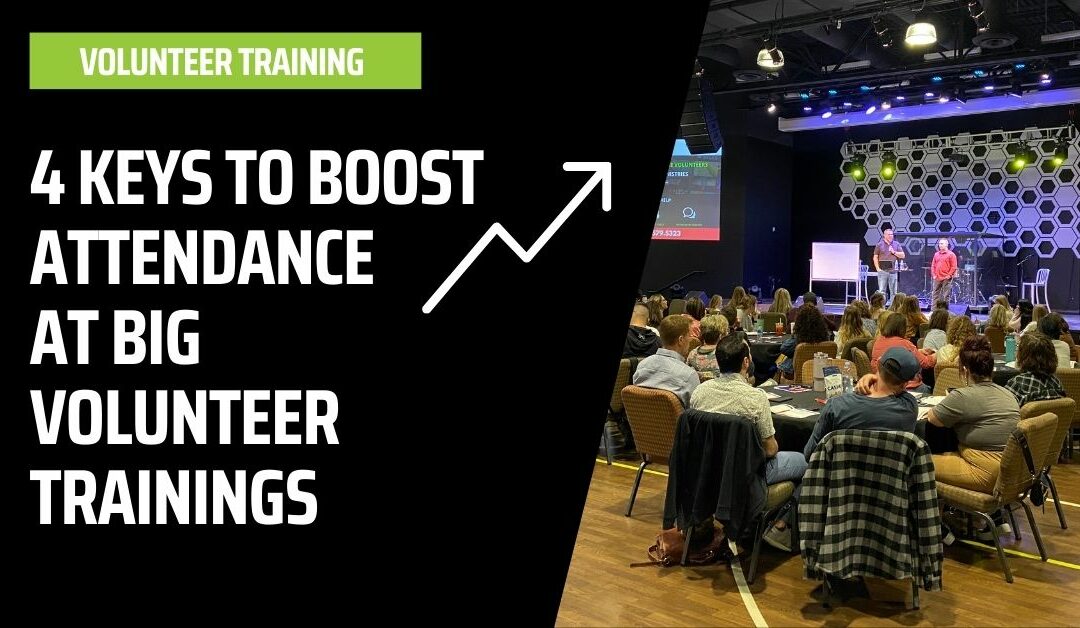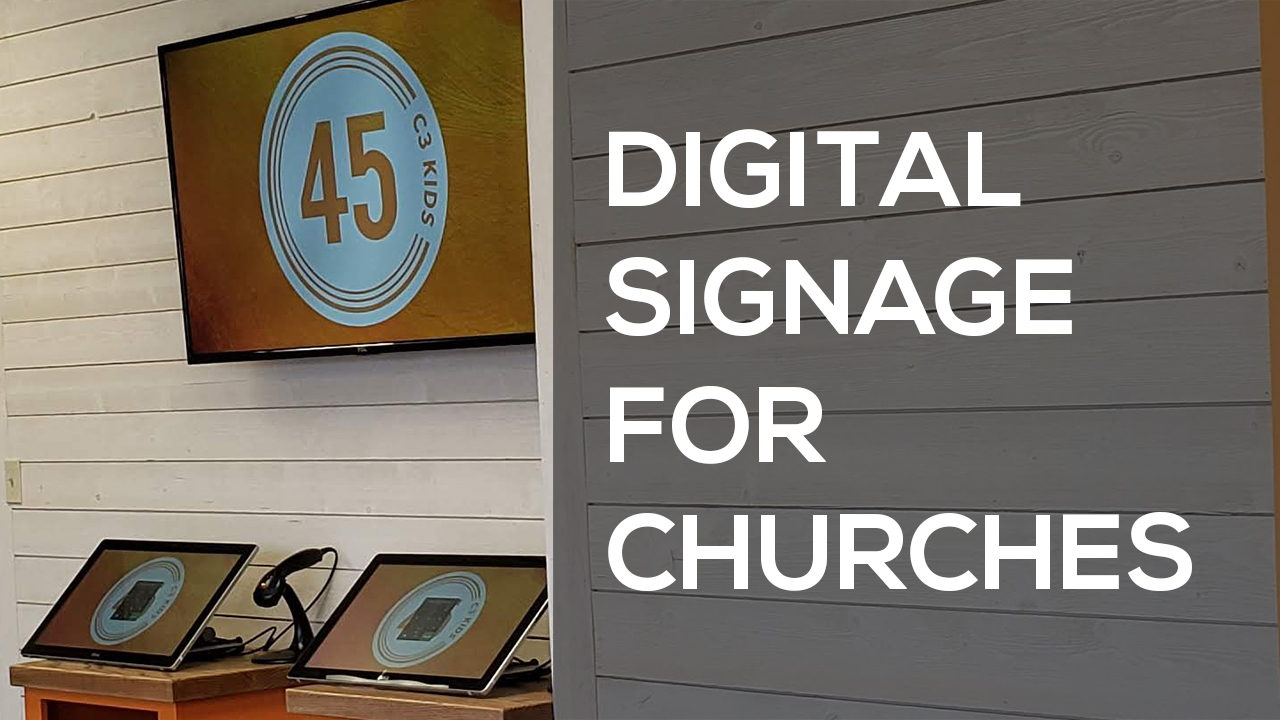As church leaders, one of the most daunting challenges we often face is organizing volunteer training events only to see a fraction of volunteers attend. It can be quite disheartening to prepare and have fewer than expected show up. I remember attending a mini-conference at another church where the topic of volunteer training attendance came up. Leaders shared various attendance percentages, with some as low as 30-50%. One staff member mentioned an impressive 80% attendance rate within their highly committed worship arts ministry, which seemed to underline the strong correlation between role commitment and turnout.
Fast forward to today, I think we can agree that the situation has not improved. It’s quite common for large training gatherings to struggle with attendance, often seeing only 30-50% of volunteers showing up. What’s even more frustrating is that those who could benefit most frequently are the ones who miss these trainings. To address this, setting realistic expectations and employing effective strategies to boost attendance is critical. For example, using personal invites and ensuring easy attendance logistics can make a significant difference.
Key Takeaways
- Volunteer training events often struggle with attendance.
- High commitment roles tend to have better turnout.
- Effective strategies and realistic expectations are crucial for improving attendance.
Volunteer Training Challenges
Historical Perspective on Volunteer Training
About fifteen years ago, our church adopted a model where all ministries conducted monthly volunteer trainings on Saturday mornings for around three hours. Attendance was quite variable with other churches reporting an average of 40-60%, while we had some success reaching up to 80% for certain ministries like worship arts. This model, though ambitious, reflects an era when volunteer training had different dynamics and perhaps higher engagement.
Comparing Attendance Rates
It has always been challenging to ensure high attendance at volunteer training events. Generally, churches see attendance rates ranging from 30% to 50%. Even during our more engaged periods, attendance varied significantly between ministries. For example, our children's ministry achieved about 60%, while guest services saw lower numbers around 40-50%. Achieving an 80% attendance rate is exceptional but rare, and a consistent 100% attendance is largely unrealistic.
Correlation Between Commitment and Attendance
We observed a clear link between the commitment level required by a volunteer role and the attendance at training sessions. Higher commitment roles, such as those in the worship arts ministry that required midweek rehearsals, often saw better attendance. Conversely, roles with less frequent commitments showed lower attendance rates. The commitment to the role significantly impacts how often volunteers attend training, making it crucial to understand commitment levels when planning these events.
Changing Participation in Trainings
Present Patterns in Volunteer Involvement
Organizing volunteer training sessions can be quite a challenge, especially when the turnout isn't as expected. We've all faced the frustration of planning these events only to see half or even fewer of our volunteers attending. A few years back, during a mini-conference with around 100 leaders, a discussion unfolded about the attendance rates for monthly volunteer trainings. Many leaders reported attendance rates of 40% to 60%.
Remarkably, one of our staff cited an 80% turnout for our worship arts team. This high attendance was likely due to the strong commitment levels of those volunteers. In contrast, guest services volunteers, who often have lower commitment roles, showed up less frequently, around 40%-50%. The correlation seems clear: the more committed the role, the better the attendance.
Seeking Input on Training Participation
Let's face it: volunteer training attendances have generally been poor, and it seems to be getting worse. It's common to see only 30% to 50% of volunteers attending large training events, which is disheartening, particularly when those who could benefit the most are often absent.
It's crucial for us to share our experiences and see trends within different ministries. What's your current volunteer attendance rate for training events? We'd love to hear your thoughts. Is it better or worse now compared to the past, and why do you think that is? We're aiming for realistic expectations, understanding that 100% attendance is unlikely. Even at 60-80%, we're in a good place. Let's support each other in finding ways to effectively train our volunteers.
Realistic Expectations for Attendance
Setting Achievable Targets
As church leaders, we all know how frustrating it is to plan a volunteer training event and see only a fraction of the volunteers actually show up. I remember attending a mini-conference with about 100 leaders from other churches. The host pastor shared that they used to hold monthly volunteer trainings on Saturday mornings. Back then, attendance varied, with estimates ranging from 40% to 60%. One leader claimed an 80% attendance rate, which seemed surprising until we considered the high commitment levels of certain ministry roles.
Research shows there's usually a correlation between the commitment level required by the volunteer roles and the attendance rates at training events. For instance, at our church, roles in worship arts had higher attendance due to the weekly commitment and necessary mid-week rehearsals. On the other hand, roles in guest services, which might only be required once a week, had lower attendance rates.
Based on several conversations with other church leaders, we should aim for a 60% to 80% attendance rate for our volunteer trainings. Hitting 100% is unrealistic, but an attendance rate in this range is a solid target, considering the varying commitments across different ministries. To achieve this, we can utilize a mix of personal invitations, frequent communications, and making the events more accessible and appealing.
Strategies for Increasing Turnout
Tailored Invitations
Creating personalized invitations is key. Using individual names and specific roles ensures the invite feels important. Whether it's through email, text, or a call, personalization increases the likelihood of a positive response. We can use templates but add unique elements to make each volunteer feel valued.
Optimized RSVP Systems
An efficient RSVP system helps us track responses and manage follow-ups effectively. Using tools like evites or church management systems allows us to keep the process organized. Sending initial saves-the-date emails around eight weeks before and following up regularly ensures volunteers are reminded without being overwhelmed. It's important to only contact those who haven't responded to avoid frustration.
Consistent Communication Schedules
Engagement starts with early communication. Begin by sending save-the-date notifications about eight weeks out, followed by weekly reminders. As the event approaches, use text messages and personal conversations, especially within two weeks of the gathering. Mentioning it in all other communications, like emails and volunteer huddles, reinforces the message. Consistent communication ensures everyone is aware and reminds them of their commitment.
Implementation Tactics
Using Diverse Communication Methods
To enhance attendance at our volunteer training events, it's crucial to use multiple methods of communication. Start by sending an initial email about eight weeks before the event to save the date. Continue with weekly email reminders to those who haven't responded, ensuring the communication remains targeted and non-intrusive. Platforms like evites or church management systems can be beneficial in tracking RSVPs and sending precise follow-ups. As the event approaches, around two to three weeks out, a personal text reminder can be effective. Finally, in the last one to two weeks, in-person conversations help solidify commitment.
Significance of Face-to-Face Conversations
Engaging volunteers through face-to-face interactions proves highly effective, especially when the event is nearing. About one to two weeks before the event, reach out to volunteers individually during Sunday services or other gatherings. This direct approach shows the importance of their attendance and provides an opportunity for immediate RSVPs. Enlisting the help of other volunteers to spread the word and gather responses can also enhance our outreach efforts.
Making Use of Personal Texts and Calls
For those who still haven't RSVP'd as the date draws near, personal texts and phone calls are key. Address them directly and remind them of the event details. Additionally, sending friendly reminders to those who have already RSVP'd can reinforce their commitment. Consistently mentioning the event in all our regular communications, including emails about curriculum or during volunteer huddles, keeps the training on everyone's radar.
Operations and Motivations
Childcare Assistance
Providing childcare during our events is crucial. We find that offering either paid or volunteer childcare allows more parents to attend our training sessions. By hiring teenagers or other volunteers to watch the children, we can significantly increase participation. Including a checkbox for childcare needs in the RSVP form helps us plan effectively.
Food Provisions
Having meals available is another strategy we use. Feeding our volunteers can sometimes get expensive, but it’s worth the investment. We have tried different methods such as potlucks to keep costs down. Everyone appreciates having a meal together, and it makes the training sessions feel more like community gatherings.
Additional Volunteer Engagement Tips
One of the most challenging aspects of hosting volunteer training events is ensuring high attendance. We all understand the frustration of putting together a comprehensive training session only to have a fraction of our volunteers show up. Here are a few tips to help increase volunteer engagement:
- Use Personal Invites: Begin communication well in advance. Send an initial email eight weeks out and follow up weekly with RSVP reminders to those who haven't responded. Using a system that tracks responses can help avoid redundant messages. As the event date approaches, send personal texts and have face-to-face conversations to encourage attendance.
- Provide Childcare: Offering childcare can significantly boost attendance. Whether it's through paid services or volunteers, ensuring that volunteers have a safe place for their children can make a big difference.
- Feed Them: Providing food at the training events is another way to draw volunteers. This doesn’t have to break the bank; a potluck can work just as well.
- Acknowledge Commitments: Recognize the different levels of commitment required by various roles. Tailoring the training content to suit these different commitments can lead to better engagement.
Additionally, here’s a helpful overview in table format:
| Tip | Action |
|---|---|
| Personal Invites | Email reminders, texts, and in-person conversations |
| RSVP Tracking | Systems to track responses and avoid redundant communication |
| Childcare | Provide paid or volunteer childcare |
| Food | Offer food, consider potluck style to manage costs |
| Tailored Content | Adjust training based on the commitment level of different volunteer roles |
By implementing these strategies, we can work towards better engagement and higher attendance at our volunteer training events.




